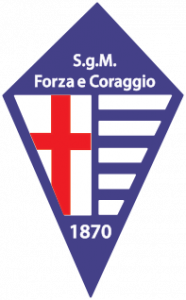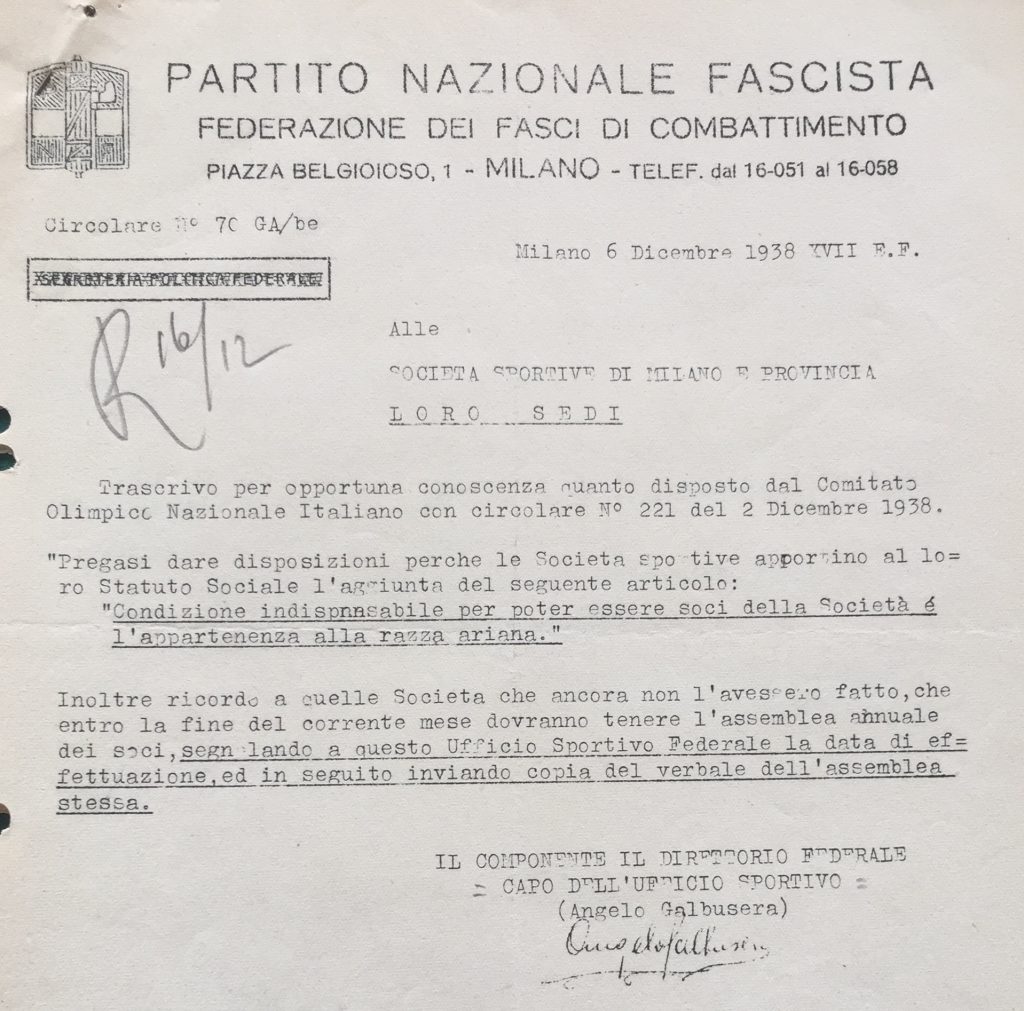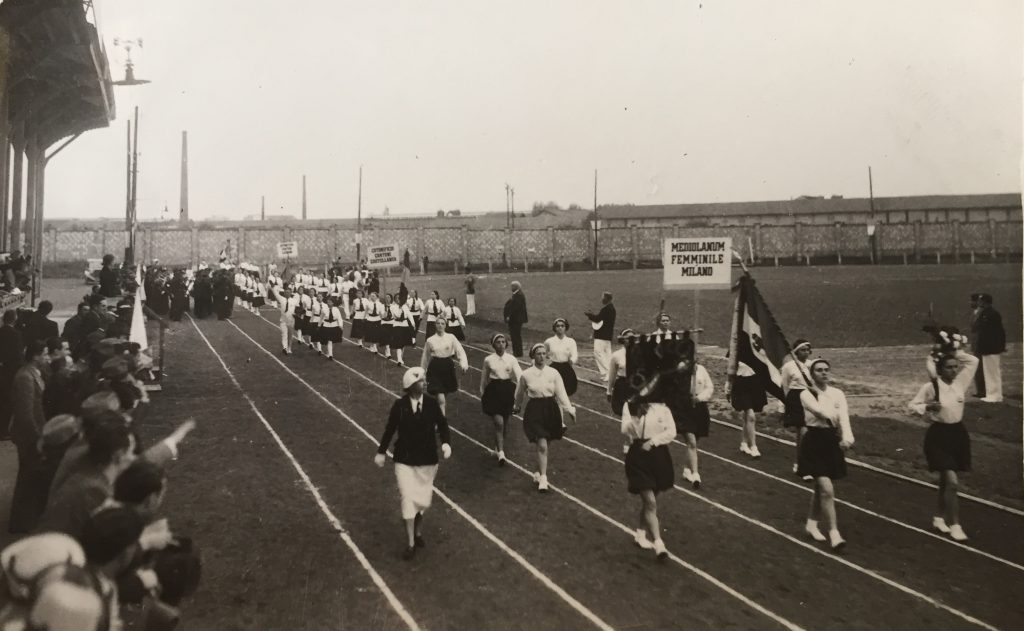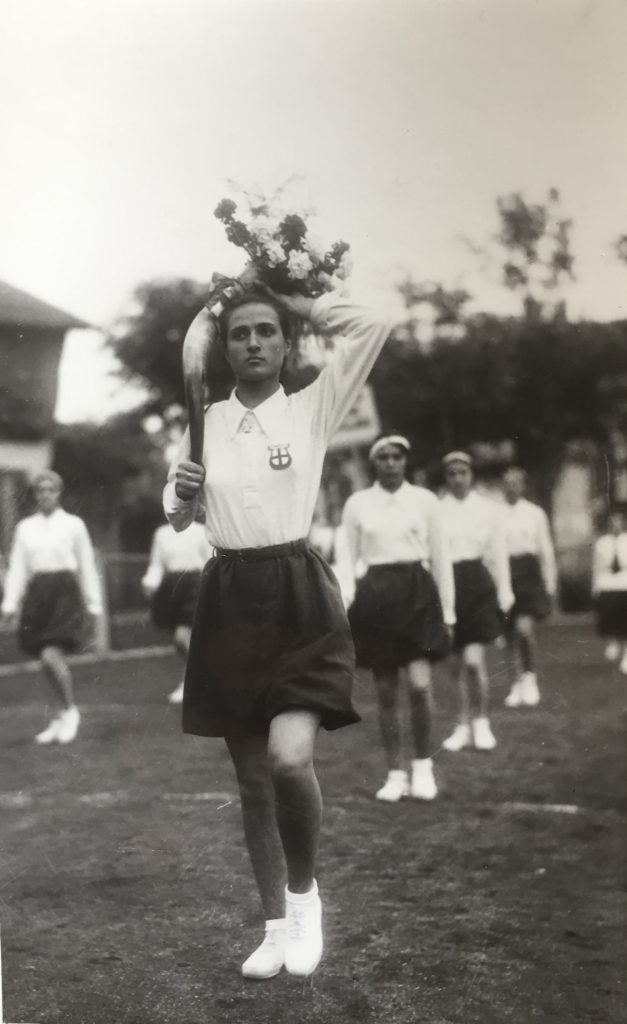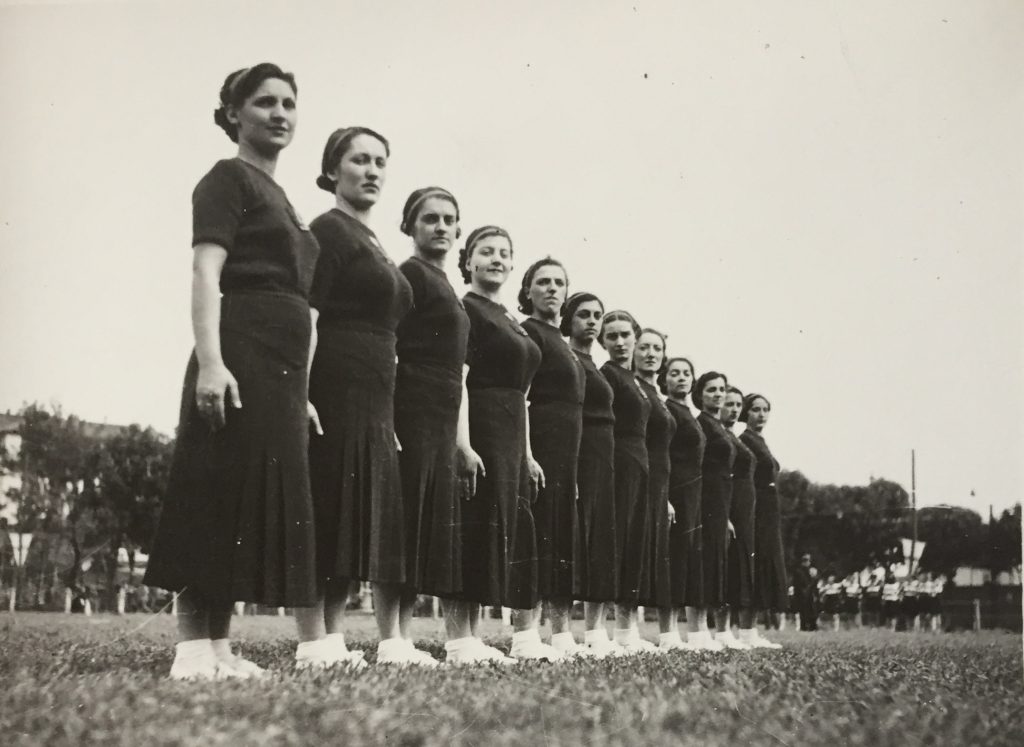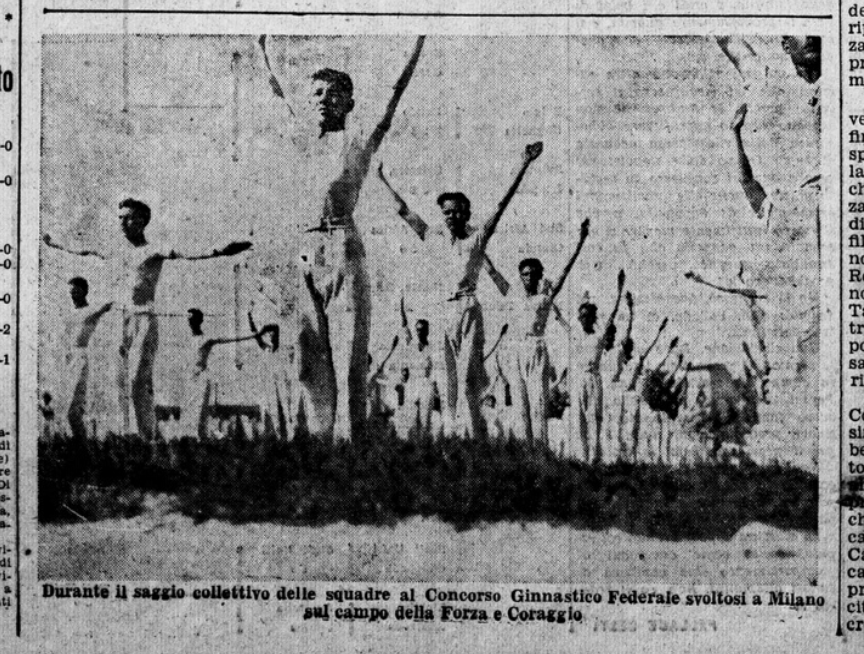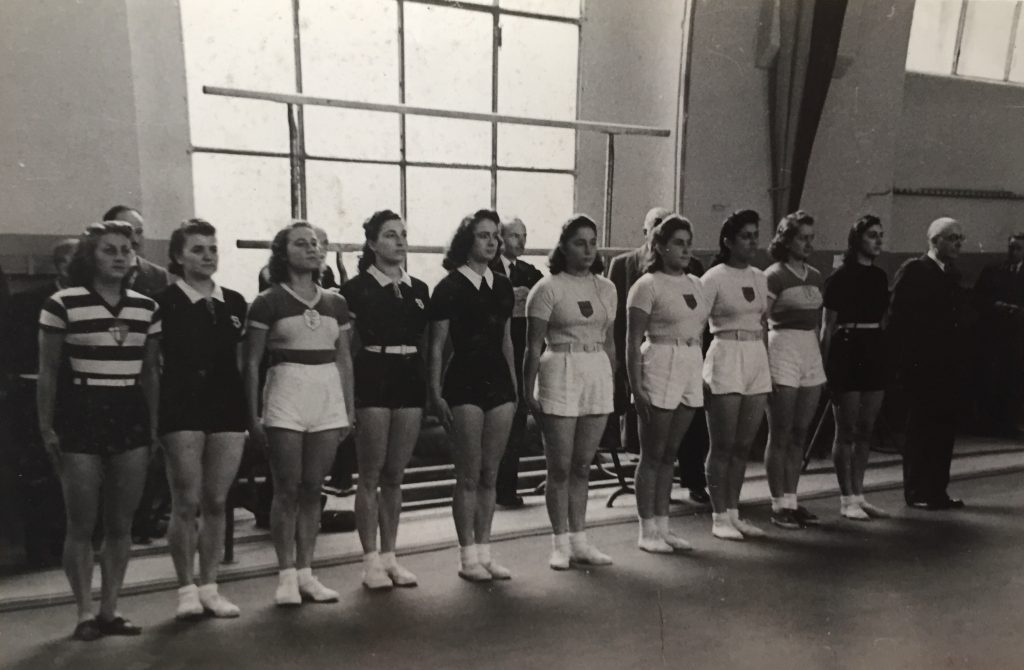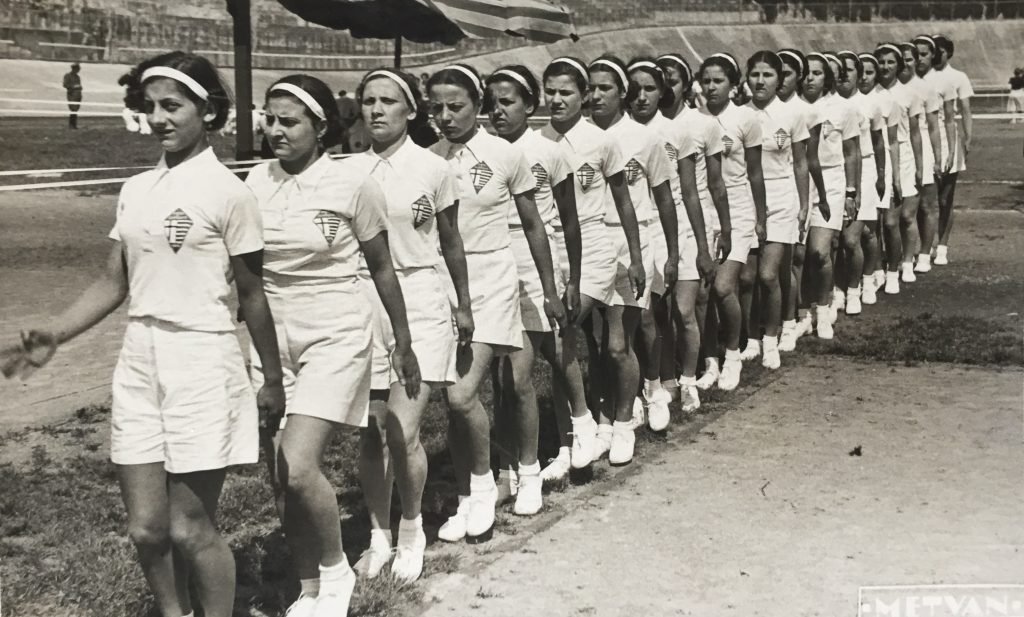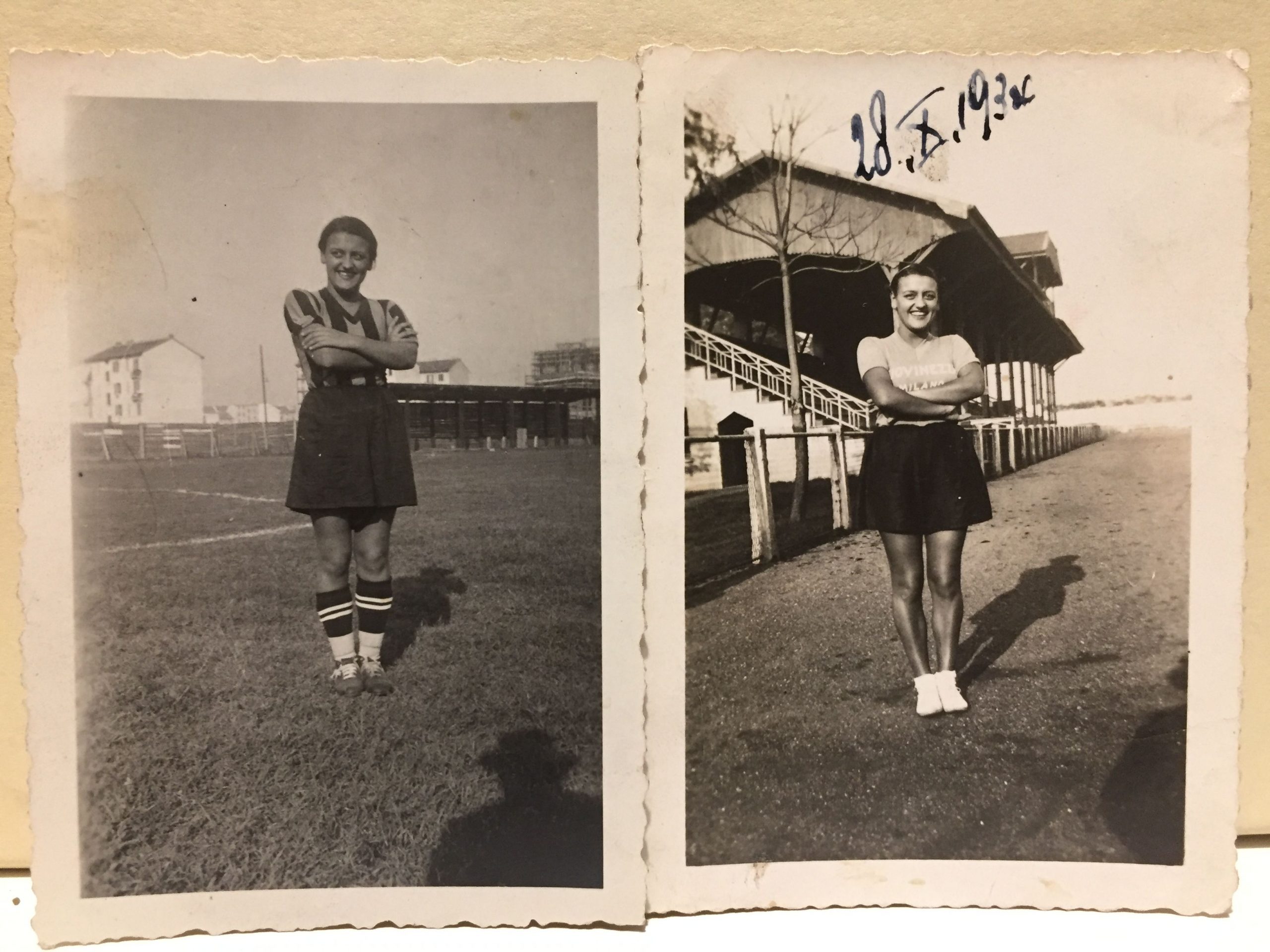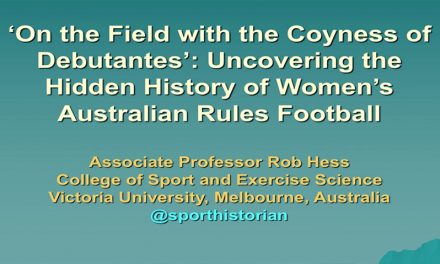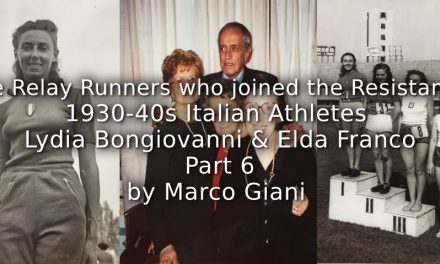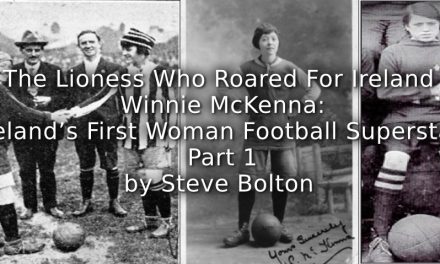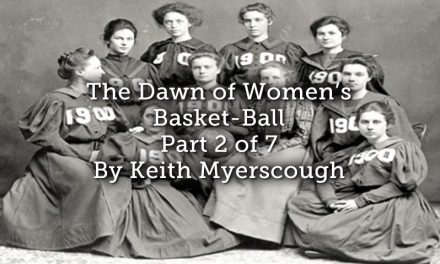To read the previous 4 parts of this series – please click on the following links
- Part 1 – bit.ly/2NBMzZg
- Part 2 – bit.ly/2JKczw6
- Part 3 – bit.ly/38ACGl8
- Part 4 – bit.ly/36AWHWA
Founded in 1870, Forza e Coraggio has always been one of the most important sports clubs in Milan: its athletes have been outstanding men and women in the history of Milanese and Italian gymnastics, basketball, athletics, swimming, running, tennis.
-
The Forza e Coraggio logo .
Source: www.forzaecoraggio.com
From 1930, Forza e Coraggio ‘Strenght and Courage’ is located in via Gallura (45 minutes by feet from the Duomo, south-bound), where the historical archives still lie: in mid-September 2019 I had the opportunity to consult it, with the assistance of Mr. Sergio Bonfanti, Forza e Coraggio’s archivist, whose family, located in the neighbourhood, has always been a member of sports society. For him, introducing me to the history of Forza e Coraggio (studied in depth by Sergio Giuntini), showing me from archive’s windows where the historical places (i. e. the tennis courts) were, was also talking about the story of his family, his friends and of the Vigentino district.
Forza e Coraggio archives could share a light on the history of Italian sports during the Fascist regime (1922-1943). First of all, the wonderful sporting centre was hosting not only the Forza e Coraggio teams but also other sports groups, among which there were also the ones belonging to the Gruppi Rionali Fascisti (GRF). They were the rione ‘district’ Fascist groups, the smaller and more local entity of the Partito Nazionale Fascista ‘Italian National Fascist Party’ (PNF).
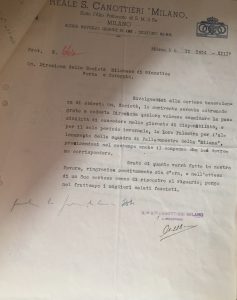
Source: Archivio Forza e Coraggio (Milano)
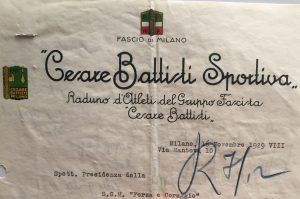
Source: Archivio Forza e Coraggio (Milano)
In February 1934, the Secretary of Reale Società Canottieri Milano (an outstanding rowing society) wrote to Forza and Coraggio, asking permission to use their gym during wintertime to play basketball (R.S. Canottieri had both male and female basketball teams).
In 1929, the head of the sports group of GRF Cesare Battisti wrote to the Forza e Coraggio, about an athletics meeting. Each Gruppo Rionale Fascista was dedicated after some Fascist and/or nationalistic hero, such as Cesare Battisti (1875-1916), Italian patriot killed by the Austrians during the World War I as deserter (his Italian-speaking family was from Trento, before WWI a city belonging to Austria-Hungarian Empire). As you can see, each GRF had a logo.
During the Ventennio (1922-1943), the Fascist regime was willing to take control of the entire Italian sports movement. This meant only that every public sports event had to be authorized by the local PNF Ufficio Sportivo ‘Sports Office’, but also that sports clubs had to follow the regime’s policy, with no exception. Any infringement could lead to the sports club closure.
- Source: Archivio Forza e Coraggio (Milano), 1.3.3.3/8 (b. 31)
According to the Racial Laws against Jewish citizens of the Kingdom of Italy, issued by Mussolini’s government under the influence of its Nazi German ally in 1938, the Comitato Olimpico Nazionale Italiano (CONI) (Italian Olympic Committee) ordered to all sports clubs to add a new article to their statutes: “Belonging to the Aryan race is a prerequisite to be member of this club”. On 6 December 1938, the head of Milanese Ufficio Sportivo ‘Sports office’ of the PNF wrote to all sports clubs in Milan and its Provincia, asking them to add what the CONI had been requested.
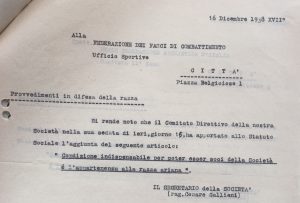
Source: Archivio Forza e Coraggio (Milano), 1.3.3.3/8 (b. 31)
On 16 December 1938, the Segretario of Forza e Coraggio answered, writing that the day before the Comitato Direttivo ‘Executive Board’ of Forza e Coraggio added the anti-semitic article to the Society’s statute.
Some beautiful black-and-white photos from the Ventennio show us how practicing sports by a young girl during those years looked like. From 28 to 30 May 1937, the Concorso Federale Nazionale ‘Federation [Federazione dei Fasci was a name for the National Fascist Regime, so the adjective means ‘Fascist’] (Gymnastics) Competition’ was held in Milan, organized by Forza e Coraggio. A small envelope still keeps some photographs, taken during the opening outdoor ceremony, which took place outdoor, in the sporting fields.
- Source: Archivio Forza e Coraggio (Milano), «SQUADRE FEMMINILI […]» envelope
The first team is Mediolanum Femminile, from Milan, the second Cotonificio Cantoni from Castellanza, which had been one of the most important sporting clubs in supporting the women’s sports movement in the 20s’ (athlete Piera Borsani was on of the most important member: during the week, she really worked as textile mill worker). Please note the Roman Salute made by the audience and by Cotonificio Cantoni’s coach (white shirt and pants), and the martial aspects of Mediolanum female coach, wearing a beret and a blazer (very similar to the female uniform of the Fascist organizations).
- Source: Archivio Forza e Coraggio (Milano), «SQUADRE FEMMINILI […]» envelope
A Mediolanum gymnast holding a cornucopia ‘horn of plenty’ full of flowers during the opening ceremony. Such images were meant to give to the audience the image of the Fascist sporting woman: she was strong and athletic, yet not a tomboy, a “feminine” women, full of grace, more similar to the sporting girls of the Antiquity, such as Roman statues and Odyssey’s Nausicaa.
- Source: Archivio Forza e Coraggio (Milano), «SQUADRE FEMMINILI […]» envelope
The picture of this unknown gymnastics team conveys another two important value in Fascist women’s sport ideology, such as unity and modesty. The girls, in line, looking like statues, are wearing the same black kit and a very long skirt (not the “immodest” short pants of their European colleagues). Some of them are smiling, but others are looking are serious-looking, just like both soldiers or Italian sportsmen of that period. The ultimate message was: these Fascist donne nuove ‘new women’ are strong yet feminine women of the new Mussolini’s Italy.
-
Instead of the latter three photos, Il Littoriale (the CONI sports newspaper) published just picture, taken from the male’s event.
Source: Il Littoriale, 1st of June 1937, p. 4.
Starting from 1933, women’s sport teams all around Italy had been asked by the CONI to select athletes who were able to compete in international meetings and, above all, the Olympic Games. In the Summer Games of Berlin 1936, Italy was just 7th on 8 during the women’s artistic gym team all-around. Italy must have a better performance, but there was a generational turnover … At the beginning of May 1940, just a few days before Mussolini declared war on France and Great Britain, Hungary women’s gymnastics team was invited in Florence and Novara for a double meeting against Italy. Forza e Coraggio sent one of its gymnasts.
Original handwritten caption (on the back) says: «Year 1940, XIX [of the Fascist Era] | 1st training meeting before Italy vs. Hungary meeting» (unknown place). Then come the gymnasts’ names: Maria Teresa Bertoni (wearing the white and blue navy Forza e Coraggio kit); Anna Maria Gelmini (GRF Tori, Genoa); Elda Cividino (R. S. Ginnastica, Trieste); Torriani (Torziani?) Lilia (S. Ginnastica, Sestri Levante); Anna Lia Salvadori (Pistoia); Anna Maria Corsi (Etruria, Prato); Floriana Nencini (Etruria, Prato); Norma Govoni (Etruria, Prato); Anna Maria Bonino (unknown team); Anna “Anny” Avanzini (Pro Patria Busto); coach Professor Gino Grevi. Avanzini and Cividino have been joined the 1936 Summer Olympics; being born in 1921, Cividino (15) was the youngest athlete of the Italy National Team in Berlin.
Which is the connection between Forza e Coraggio and the calciatrici? Just three but meaningful leaflets preserved in the archive, which could cast a light upon the end of the GFC, in the Fall of 1933 …
In the first of these leaflets (which seem to be the copy of original letters), one of the first calciatrici, Ninì Zanetti wrote to the Forza e Coraggio on 6 December 1933:
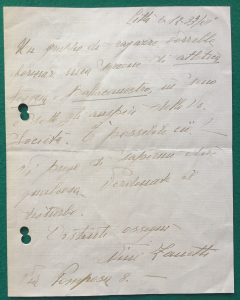
Source: Archivio Forza e Coraggio (Milano), 1.2.1.2/5 (b. 18)
“A group of girls would like to form an athletic and basketball section, inside of and under the protection of your Sports Club. Could it be possible?
Please, tell me something about it. Sorry to bother you.
Kind regards, Ninì Zanetti”
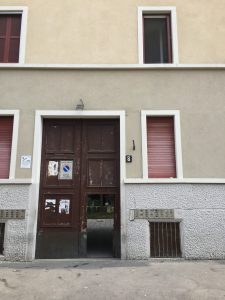
This leaflet is very important because it reveals the 1933 Ninì Zanetti address. Here you can see how via Pomposa 8 building looks like in 2019: a quite scary council flat in Corvetto district now.
In the Thirties, it was one of the outer buildings in the city, as you can see thanks to the next image.
- Thanks to this wonderful City of Milan’s map (1937), you can see how Forza and Coraggio’s field (on the extreme left, in Via Gallura), was not so far from Ninì Zanetti’s house in Via Pomposa. They were both on the south-eastern outskirts of the city; please note how few buildings there were in this area, which nowadays is a densely populated area
The second leaflet was written by a Forza e Coraggio manager to Mrs. Ninì Zanetti. Since this copy is undated, it’s hard to say with no doubt which is the correct relationship between this note and the other two leaflets, but it seems reasonable to put it after the first and before the third. There’s a reference to
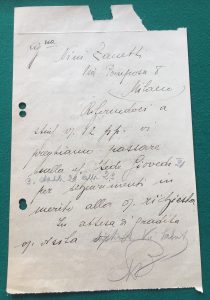
Source: Archivio Forza e Coraggio (Milano), 1.2.1.2/5 (b. 18)
“Referring to your 12 «p.p.» (pages), we ask you to meet us in our office on Thursday, from 9 to 11 pm, for further clarifications about your request. Waiting for your visit, kind regards”
Most likely, Ninì accepted this invitation (in December 1933, Thursdays were on 7, 14, 21, 28). On 30 December 1933 she wrote a second letter, to the Forza e Coraggio’s Commissione Tecnica ‘Sports Technical Commision’:
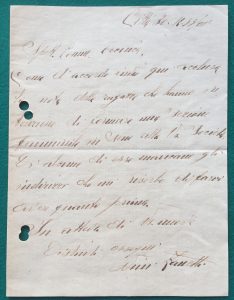
Source: Archivio Forza e Coraggio (Milano), 1.2.1.2/5 (b. 18)
“As agreed, I send you attached the note of the girls willing to form a female section inside of your Sports Club. The addresses of some girls are missing, but I’m going to send let you have all of them as soon as possible.
Waiting for some news from you,
Kind regards,
Ninì Zanetti”
Just few sentences, yet very useful. In the last days of 1933, Ninì Zanetti, the one who bravely wrote on open letter to sports weekly La Domenica Sportiva in the Summer of 1932 asking why Italian girls could not play football as English and French girls used to do, took again the initiative, writing to the most important sports club in South-East Milan, asking for hospitality for the new sporting adventure of the former calciatrici. As we’ve already seen in Part 1, former footballer Marta Boccalini wrote in his memories entitled “Ricordando…” that after the end of GFC (Autumn 1933), she and her sister Rosetta “didn’t play anything for some time until one day we met Zanetti (a dear football mate), who invited us to play basketball. We didn’t even know what it was, but she insisted so much that she brought us to the Forza e Coraggio sports centre”. Marta describes also the location: (“The basketball court was located under a tin roof: it was wintertime, and it was bloody cold!”), and the audience: “At the beginning, there were very few supporters, but over time the Forza e Coraggio gym began to fill up. People liked the game and were interested in it.”
We still miss a lot of pieces of the “sporting rebirth” of former calciatrici after Autumn 1933, yet these three leaflets from Forza e Coraggio’s archive could cast some light on their adventure. Meaningfully, they searched for hospitality in one of the most important sports clubs in Milan: a safe place in those troubled times.
-
Forza e Coraggio gymnastics team in Genova (8 May 1937).
Source: Archivio Forza e Coraggio (Milano), 1.2.1.2/5 (b. 18)
Article © Marco Giani
The author would like to thank Prof. Virna Duca (Forza e Coraggio’s Direttore Generale) for the permission to publish the pictures.
To read Part 6 Click HERE
For more pictures about 1940 gymnastic meeting between Italy and Hungary, see:
https://twitter.com/calciatrici1933/status/1221101701177978883
For more pictures about Fascist Era (1922-1945) Italian women’s basketball, see:
https://twitter.com/calciatrici1933/status/1072141225946480640
Coming soon in Part 6 –
-
Brunilde Amodeo as a footballer (October 1933), and then, one year later, as an athlete at Forza e Coraggio sporting center with the Gruppo Sportivo Giovinezza shirt (October 1934).
Source: Archivio personale
Brunella Bracardi (in the next parts of this article we’ll be flipping through the majestic photo of this new brand discovered archive!).

![“And then we were boycotted” <br> New discoveries about the birth of women’s football in Italy [1933] <br> Part 5](https://www.playingpasts.co.uk/wp-content/uploads/2020/03/PP-banner-maker-3.jpg)
